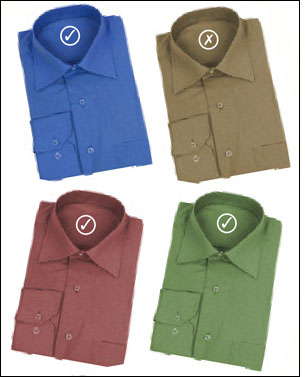Dec 01, 2010In the late 1960s, grocery stores joined with consumer packaged goods (CPG) companies to agree on a standard for using bar codes on most products. In the 1980s, retailers came together again to agree on standards for electronic data interchange (EDI), a method for sharing data electronically. Now, a new initiative launched by Voluntary Interindustry Commerce Solutions (VICS) and standards groups GS1 US and GS1 Canada could propel the adoption of radio frequency identification in a similar way.
On Nov. 1, VICS and GS1 announced the launch of the Item Level RFID Initiative, which brings together apparel manufacturers and retailers to develop a roadmap for the adoption of RFID at the item level, first in the apparel sector and later in other areas. The group has established subcommittees to create a set of guidelines that will enable retailers, manufacturers, suppliers and logistics companies to deploy RFID systems based on the Electronic Product Code. The goal is to set standards for using the technology to reduce incompatibility issues, such as suppliers being asked to use different RFID tag-data specifications for different stores.
In addition to VICS and GS1, participants in the initiative include Conair, Dillard's, JCPenney, Jockey, Jones Apparel, Levi Straus, Macy's, VF Corp. and Wal-Mart Stores. Since they are among the largest sellers of apparel in the United States, the project could create the critical mass that leads to widespread adoption of RFID technology in the apparel sector, and perhaps in other areas in which item-level tagging delivers significant benefits.
Some apparel suppliers are skeptical that the initiative will benefit them. CPG companies never embraced RFID because they saw it as an additional cost that delivered few benefits. To encourage suppliers to get on board, the group is working with the University of Arkansas' RFID Research Center to study how and where RFID can help suppliers. The research is still under way, though sources tell RFID Journal the initial results indicate there will be advantages for suppliers as well as retailers.
RFID is ideal for tracking apparel. Most clothing items are RF-friendly, eliminating many of the challenges CPG suppliers faced when tagging for retail partners. What's more, apparel inventories are not 100 percent accurate, and items are often stolen, exacerbating the problem. A single style of shirt or jeans might come in a dozen different sizes and colors. Most companies don't count items as they move from point to point in the supply chain, because the labor required would be too costly. RFID allows for rapid and sometimes automated item counting, so inventory can be taken frequently with little or no additional cost, improving inventory accuracy and ensuring the right items reach the store on time.
The initiative's success may depend on how many suppliers the group manages to bring on board. If suppliers believe RFID tagging will benefit them internally, they're likely to agree to tag goods at the point of manufacture. If suppliers tag for a few major retailers, more retailers are bound to consider deploying RFID, and eventually the suppliers will start tagging all their products. That, in turn, will likely tip the industry toward using RFID on all items.

